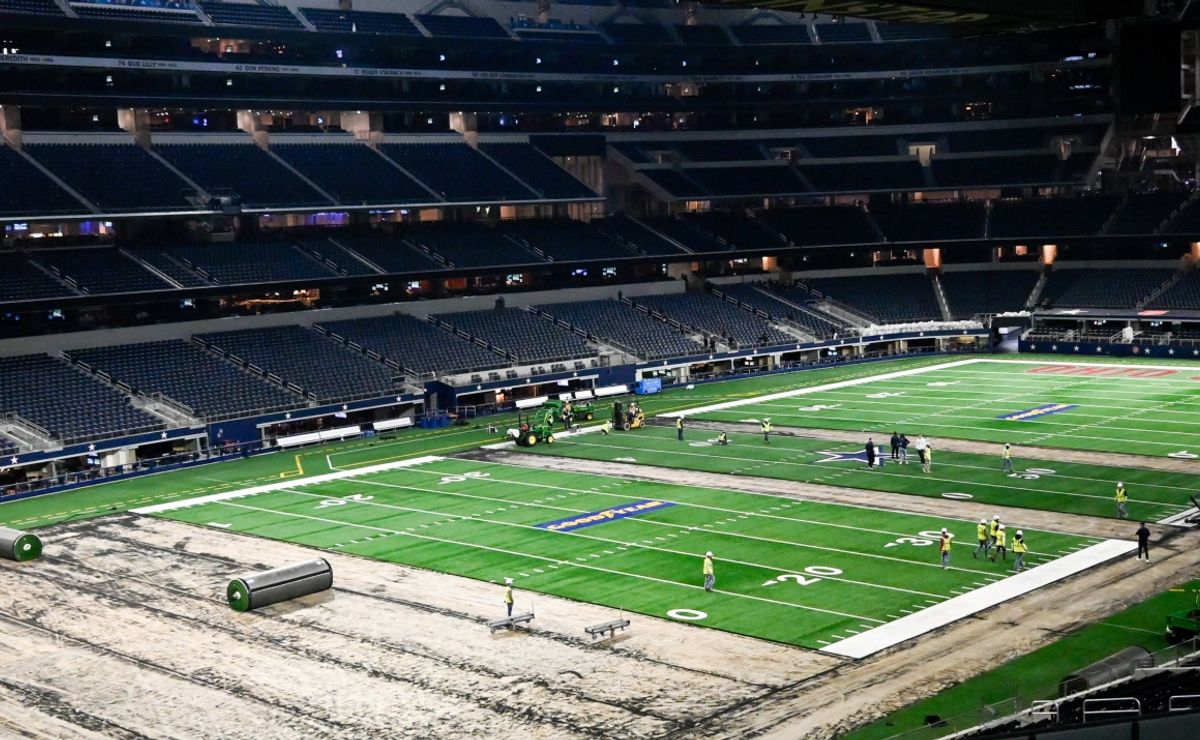World Cup 2026 turf is in hands of two American universities

The World Cup in 2026 has fielded ample debate on using turf or natural grass, with FIFA mandating the latter’s use at the tournament. For many worldwide venues, having natural grass is not a challenge. Yet, each of the venues in the United States that is hosting games for the 2026 World Cup is an NFL stadium. Over half of the stadiums total use artificial turf, not real grass. In step the University of Tennessee and Michigan State University.
FIFA has partnered with those two American colleges to research and cultivate the grass to feature at each of the 16 World Cup stadiums in 2026. The governing body of the sport globally has helped UT and MSU work on developing grass that is suitable for different climates. Also, the grass must be able to grow indoors. Eight of the 16 venues in action for the World Cup are in fully enclosed or partially enclosed stadiums. These domed stadiums will use growth lights as opposed to natural lights, which presents some inherent challenges to the quality of the grass.
FIFA requires standardized turf. Consequently, teams traveling around different parts of North America can at least have consistent grass to play on. Alan Ferguson, FIFA’s senior pitch management manager, said having that consistency is difficult.
“We’ve got stadiums in Mexico, U.S. and Canada, so probably the most diverse tournament footprint ever. I think that’s pretty safe to say,” Ferguson said. “And it comes with a special set of challenges.”
Among those challenges, University of Tennessee and Michigan State University researchers have collected data points from each of the 16 stadiums. That includes identifying which grass types work best a high altitudes like Mexico City versus low altitudes like Miami, FL.
FIFA inspects World Cup 2026 turf progress in Knoxville, TN
Financial support from FIFA led to the development of new buildings on the campus of the University of Tennessee. As we approach the two-year mark on the countdown to the World Cup, FIFA sent a delegation to the FIFA Indoor Research Building to see how well progress is going. The facility mimics the conditions of an indoor or domed stadium and how that affects grass growth.
FIFA’s continued work on grass ahead of the World Cup is a welcome sight for American soccer fans. One of the concerns with Major League Soccer is the fact that many teams use artificial turf. That often contributes to injuries and a weakening of the overall product. The consensus among players is a general dislike of artificial turf.
There are a record number of teams coming to the United States, Canada and Mexico for the World Cup. The turf will need to be in elite condition to accommodate the top players in the world. Yet, the fact that FIFA cultivates the grass off-site from stadiums presents a challenge. FIFA will transport turf to the stadiums in the weeks before the competition. Then, once the strips of real grass arrive, they have time to grow together to create one cohesive pitch. Still, the World Cup in Qatar had stadiums in an area smaller than Connecticut. In 2026, stadiums stretch across four time zones and farther than the distance from Doha to Rome.
PHOTOS: IMAGO
Loading…
Related
What’s at stake for American culture with Trump’s Kennedy Center…
In her two decades as a human rights lawyer, working on issues in more than 25 countries, Hadar Harris says she is alarmed by what she's witnessing on U.S. soil
Denmark lost 52 soldiers fighting alongside the US. Now it…
Nick BeakeEurope correspondentBBCAll his adult life, Colonel Soren Knudsen stepped forward when his country called. And when its allies did.He fought alongside
As Trump upends foreign policy, Berkeley scholar sees irreparable damage…
Last week’s Oval Office blowup with Ukrainian President Volodymyr Zelensky exemplified what many foreign policy experts have long feared: that th
Trump creates a task force for the North American 2026…
President Donald Trump creates a task force to prepare for the 2026 W











